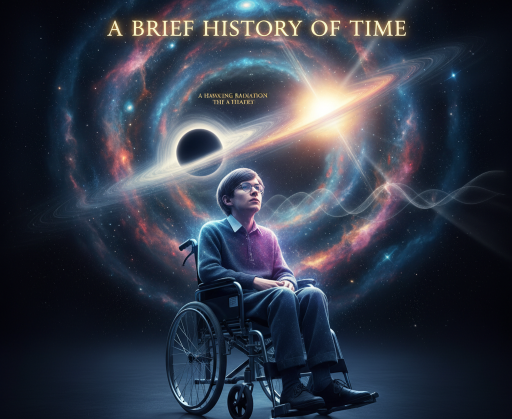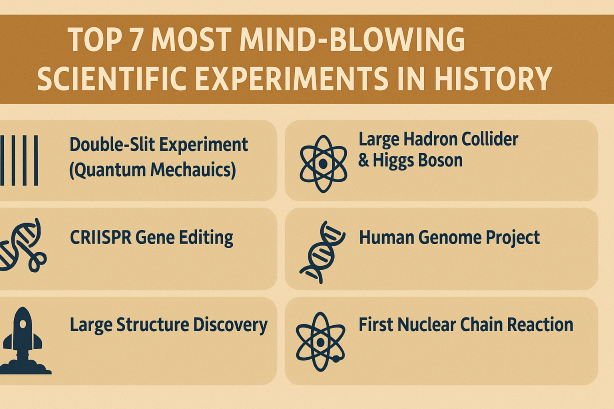Introduction: Science Breakthroughs That Changed Our Understanding
Science isn’t just about facts in textbooks—it’s about bold experiments that challenged what we thought we knew about the universe, life, and even ourselves. Throughout history, a handful of groundbreaking experiments have completely reshaped our understanding of reality. From unlocking the secrets of DNA to smashing particles at near-light speed, here are seven of the most mind-blowing scientific experiments ever conducted.
Double-Slit Experiment (Quantum Mechanics)
Imagine firing tiny particles, like electrons, through two slits—only to discover they behave like waves and particles at the same time. This experiment, first performed by Thomas Young and later expanded in the realm of quantum physics, revealed the bizarre and counterintuitive world of quantum mechanics. It remains one of the most mysterious and thought-provoking discoveries in science.
Large Hadron Collider & Higgs Boson
Deep beneath the border of Switzerland and France lies the world’s largest machine: the Large Hadron Collider (LHC). In 2012, scientists confirmed the existence of the Higgs Boson, also known as the “God Particle,” which explains why matter has mass. This discovery didn’t just prove decades of theory—it opened doors to understanding how the universe holds itself together.
CRISPR Gene Editing
With CRISPR, scientists gained the power to cut and edit DNA like a word processor. This groundbreaking experiment in genetic engineering has revolutionized medicine, agriculture, and even the potential to cure genetic diseases. It also sparked ethical debates about just how far humanity should go in rewriting the code of life.
DNA Structure Discovery
When James Watson, Francis Crick, Rosalind Franklin, and Maurice Wilkins uncovered the double-helix structure of DNA in the 1950s, they provided the blueprint of life itself. This discovery laid the foundation for modern genetics, biotechnology, and personalized medicine—shaping almost every corner of science and healthcare today.
Apollo Moon Landing
In 1969, the Apollo 11 mission wasn’t just a step for man—it was a leap for science and engineering. Landing humans on the moon and safely bringing them back to Earth proved what collaboration, technology, and courage could achieve. Beyond space exploration, it accelerated innovations in computing, communications, and materials science.
Human Genome Project
Completed in 2003, the Human Genome Project was one of the most ambitious scientific undertakings ever attempted. By mapping the entire human genetic code, scientists opened up a new era in medicine, paving the way for advanced diagnostics, targeted therapies, and deeper insight into human evolution.
First Nuclear Chain Reaction
In 1942, Enrico Fermi led the first controlled nuclear chain reaction in Chicago. This experiment marked the beginning of the atomic age, bringing both promise and peril. While it led to the development of nuclear power and medicine, it also gave rise to nuclear weapons—forever changing global politics and human history.
Conclusion: Science Continues to Push Boundaries
From peering into the quantum world to unraveling the code of life, these experiments remind us that science is never static—it’s a continuous journey of discovery. As we push forward into the realms of artificial intelligence, space colonization, and biotechnology, the next groundbreaking experiment could once again redefine what it means to understand our universe.




